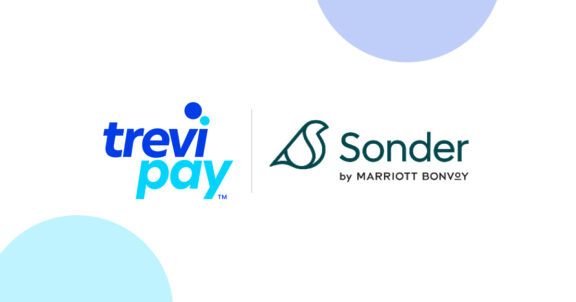What is your ‘risk and resilience’ score? Here are some insights to help you learn more about what you can do to reduce and prevent fraud for your business.
Verification
Verification is one of the early steps in the fight against fraud. Nearly half of B2B companies (47%) are using address matching and verification. However, this method is not foolproof, and may require time-consuming individual follow-up. Equally, some fraud solutions lean too far toward the no-risk verification end of the spectrum. This means legitimate customers are often declined due to ‘false positive’ results. In fact, 54% of companies with manual processes are sure they’ve declined legitimate customers along the way.
Other businesses fail to grow because their anti-fraud measures flag legitimate business contacts or transactions as fraudulent. These ‘false flags’ then prevent businesses from acquiring legitimate customers.
Onboarding
Manual onboarding, including verification and net term offers, takes an average of 13 business days. In manufacturing, it averages as many as 19 days. This is far too long in an eCommerce world where customer expectations are of quick, frictionless onboarding. Incorporating business identity checks into the onboarding process protects against fraud. Fifty-five percent of respondents report they use automated alerts to double-check transaction anomalies. These proactive systems can identify legitimate purchases quickly, and weed out those that look suspicious.
Automation
Automation is key, with 47% of respondents using automated web monitoring to minimize fraud. This helps identify suspicious domains and proactively eliminate them, protecting your company from negative consequences.
Without a robust fraud solution, international expansion is problematic. In fact, 36% of companies using manual methods say that fraud concerns limit their ability to grow their global business.
Finally, do your customers love doing business with you? A manual vetting process can undermine an otherwise positive customer experience. Forty-six percent of B2B companies that use manual anti-fraud solutions say that delays negatively affect the experience of new customers. The best fraud solution can reduce vetting to mere minutes, providing a frictionless experience.
Futureproofing
An aggressive growth strategy that generates new customers could create more exposure to fraud attempts, potentially offsetting additional revenue earned. In fact, more than half of businesses surveyed are avoiding growth due to a fear of fraud and a belief that their existing anti-fraud measures are inadequate.
Continuously monitoring and updating your company’s fraud detection strategies is critical to ensure they remain effective as fraud schemes evolve. The best strategies will be constantly updated and adapted, making sure they’re always at the forefront of fraud detection.
The best business identity theft solutions are automated
It’s no surprise that automated fraud solutions work better than manual processes. But with an array of options, which are more effective? Here’s an excerpt from the Executive Summary of Risk and Resilience: The Business Identity Theft Report.
- Nearly all retail and manufacturing marketplaces and businesses have lost an average of 3.5% of their annual sales from selling to fraudulent businesses or mistakenly flagging legitimate businesses as fraudulent.
Our survey found that 98% of retailers, manufacturers and marketplaces have been victims of fraud or have missed opportunities to transact with firms that were later revealed to be legitimate. While retailers, manufacturers and marketplaces that experienced fraud lost an average of 3.5% of their annual sales revenues, small businesses lost as much as 5% due to fraud-related concerns, such as sales to fraudulent businesses. Organizations from these three sectors that implemented proactive and automated anti-fraud solutions lost less revenue (2%) to fraud-related occurrences, whereas those that reacted to instances of fraud using reactive and manual solutions lost 4.5% of their annual revenues.
- Identity verification is one of the top three challenges facing retailers, manufacturers and marketplaces.
Half of these firms are actively addressing challenges related to fraud prevention, with the majority using payment card verification as a fraud prevention method. Approximately one-fifth of businesses see identity verification methods as equally important to protecting their organizations from fraud. Nearly half of executives say verifying the identities of new business customers is a challenge that organizations have had to address and 16% consider it their most important challenge.
- More than half of retailers and nearly half of manufacturing firms say their inability to flag fraudulent businesses has constrained their growth.
Organizations using manual and reactive anti-fraud methods experienced greater negative impacts on their growth due to fraud than those using proactive and automated solutions. Organizations that wait until evidence of fraud emerges or use manual solutions may naturally see more significant revenue loss due to human error or slow and inefficient identity verification or vetting procedures.
- Our research found that 68% of marketplaces and organizations in the retail and manufacturing sectors are not very satisfied with the systems they use to detect fraudulent businesses.
Seventy-one percent of organizations plan to implement new digital solutions to prevent fraud, and 49% state that finding a better digital solution for fraud prevention is their primary fraud prevention plan. Those that have reported success in implementing automated, digital anti-fraud solutions show the highest levels of satisfaction with their current anti-fraud strategies.
For a deep dive into business identity theft solutions—which work and which don’t—and other insights from B2B executives, download your free copy of Risk and Resilience: The Business Identity Theft Report now.
And if you’d like to learn more about TreviPay’s proven fraud solutions, start a conversation now.






